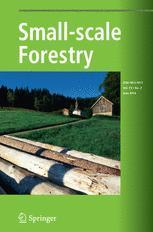Designing Contracts for Reducing Emissions from Deforestation and Forest Degradation
Reduction of carbon emissions from
deforestation and forest degradation has been identified as
a cost effective element of the post-Kyoto strategy to
achieve long-term climate objectives. Its success depends
primarily on the design and implementation of a financial
mechanism that provides land-holders sufficient incentives
to participate in such scheme. This paper proposes
self-enforcing contracts (relational contracts) as a




